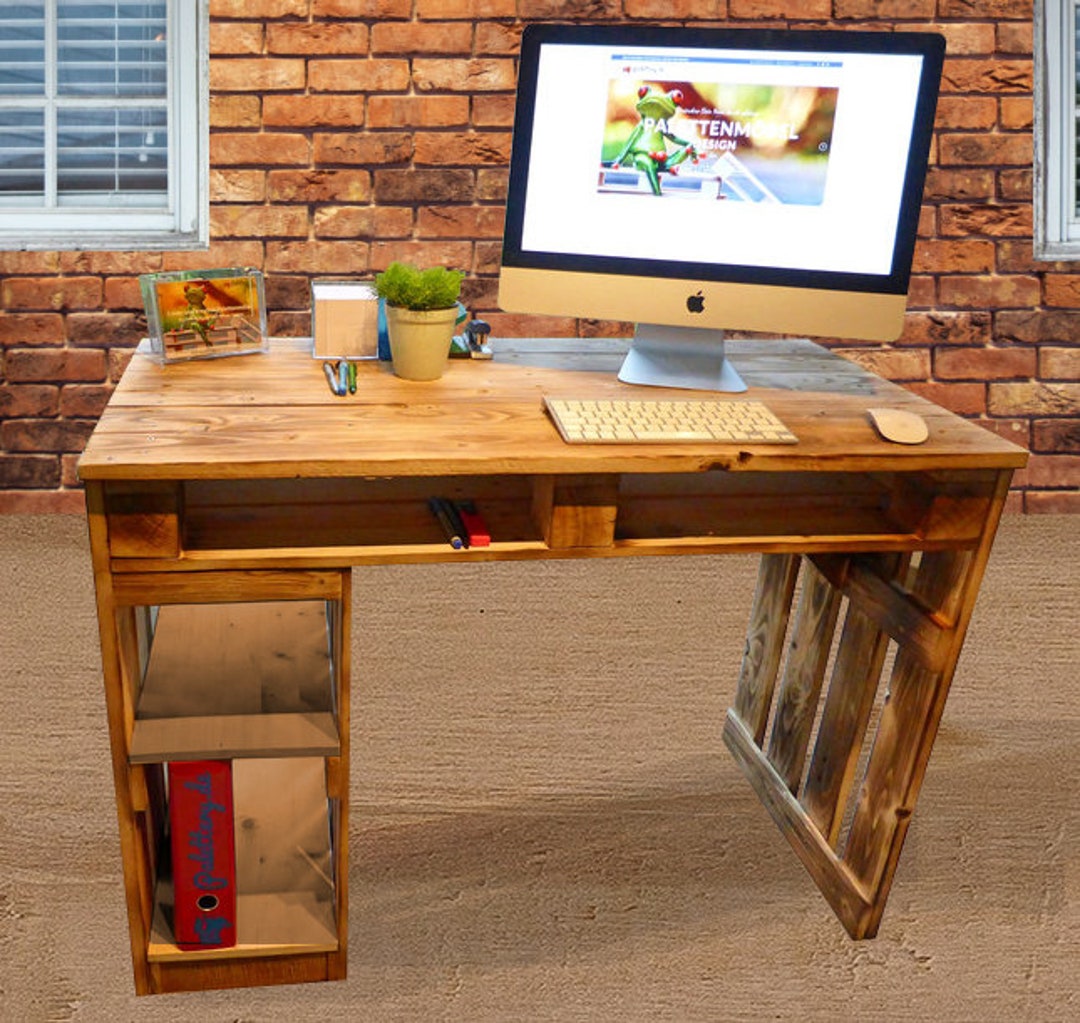Introduction: Embracing Sustainability in Home Workspaces
In an era where remote work is increasingly becoming the norm, creating a functional yet eco-friendly home office has never been more crucial. Among the many DIY projects that cater to this need, a pallet desk stands out as a symbol of sustainable innovation. This article delves into the process of transforming discarded wooden pallets into a stylish, practical workspace, showcasing not just a step-by-step guide but also emphasizing the environmental benefits and design versatility such a project brings.
Section 1: The Case for Pallets: An Eco-Conscious Choice
Wooden pallets, once seen merely as transport aids destined for disposal or recycling, have found new life in the realm of upcycling. These sturdy structures, often made from durable hardwoods, can withstand the weight of heavy loads and, with a little creativity, become the backbone of a robust and aesthetically pleasing desk. By repurposing pallets, we reduce waste, conserve resources, and minimize our carbon footprint, aligning with the principles of circular economy.
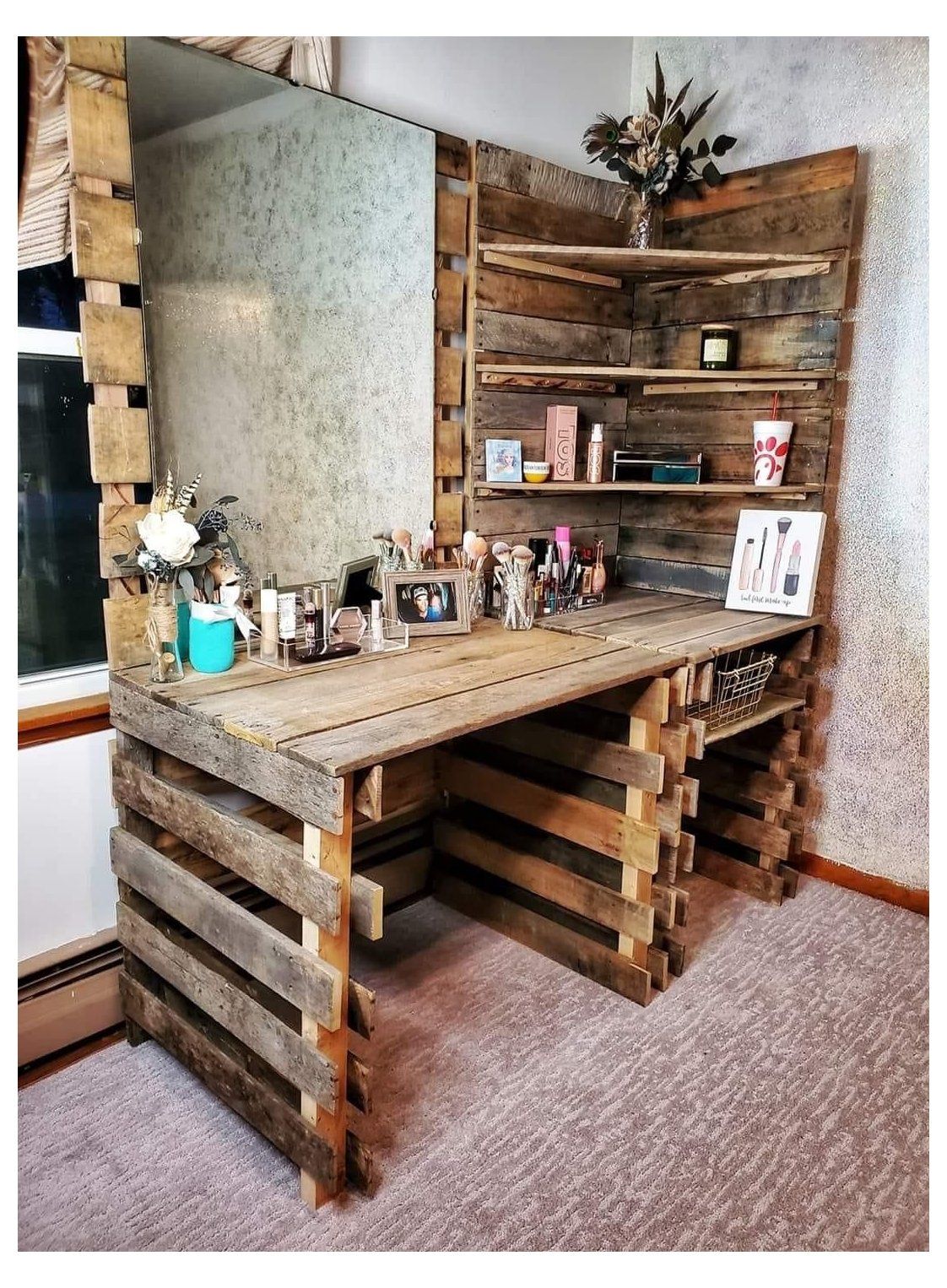
Section 2: Gathering Materials and Tools
Before embarking on this DIY journey, it’s essential to gather the right materials and tools. Aside from the pallets themselves—ideally sourced for free from local businesses or online marketplaces—you’ll need sandpaper, wood screws, a drill, saw, wood glue, paint or stain, brushes, and possibly some additional pieces of wood for reinforcement or extension, depending on your design aspirations.
Section 3: Preparing the Pallets: Cleaning and Sanding
Safety first: Always wear protective gear like gloves and goggles when handling pallets, as they may have splinters or nails. Begin by thoroughly inspecting each pallet for any damage, rot, or chemical treatments (look for stamps indicating HT for heat treated, which is safer than chemically treated). Next, remove any protruding nails and give the pallets a good cleaning with soap and water. Once dry, sand the surfaces smooth, paying extra attention to corners and edges to eliminate roughness and prepare them for finishing.
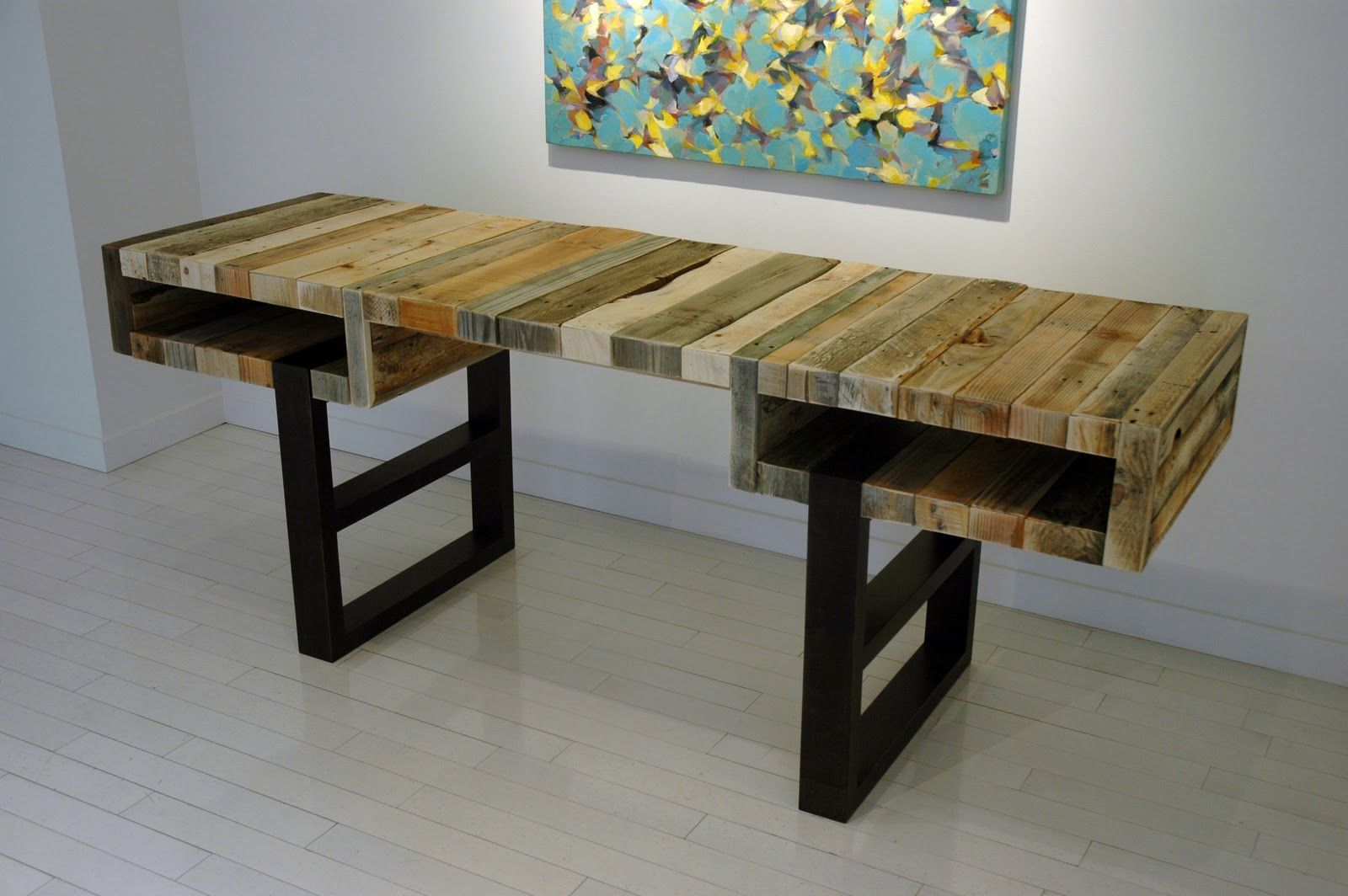
Section 4: Designing Your Pallet Desk
This is where your creativity truly shines. Pallet desks can be as simple as a single pallet on legs or as elaborate as a multi-level workstation. Consider factors like desk height, storage needs, and the overall aesthetic you’re aiming for. Sketch out your vision before committing to cuts or assembly. Will you incorporate additional shelves or drawers? Will the desk be against a wall or freestanding? Decisions made here will guide the rest of the construction process.
Section 5: Assembly and Reinforcement
With your design in mind, begin by attaching the legs. For stability, opt for sturdy, evenly spaced legs made from 4×4 posts or thick planks, securely fastened with screws and wood glue. If your design includes multiple pallets, join them using L-brackets or additional wood strips for reinforcement. Pay close attention to ensuring the desk is level and stable, adjusting as necessary.
Section 6: Finishing Touches: Staining, Painting, and Sealing
To personalize your pallet desk and protect it from wear and tear, apply a finish of your choice. Whether you prefer a natural look achieved through a clear varnish, a rustic charm with stained wood, or a pop of color with paint, ensure the finish is applied evenly and allowed to dry completely between coats. Don’t forget a final sealant to guard against spills and scratches, especially if your desk is destined for daily use.
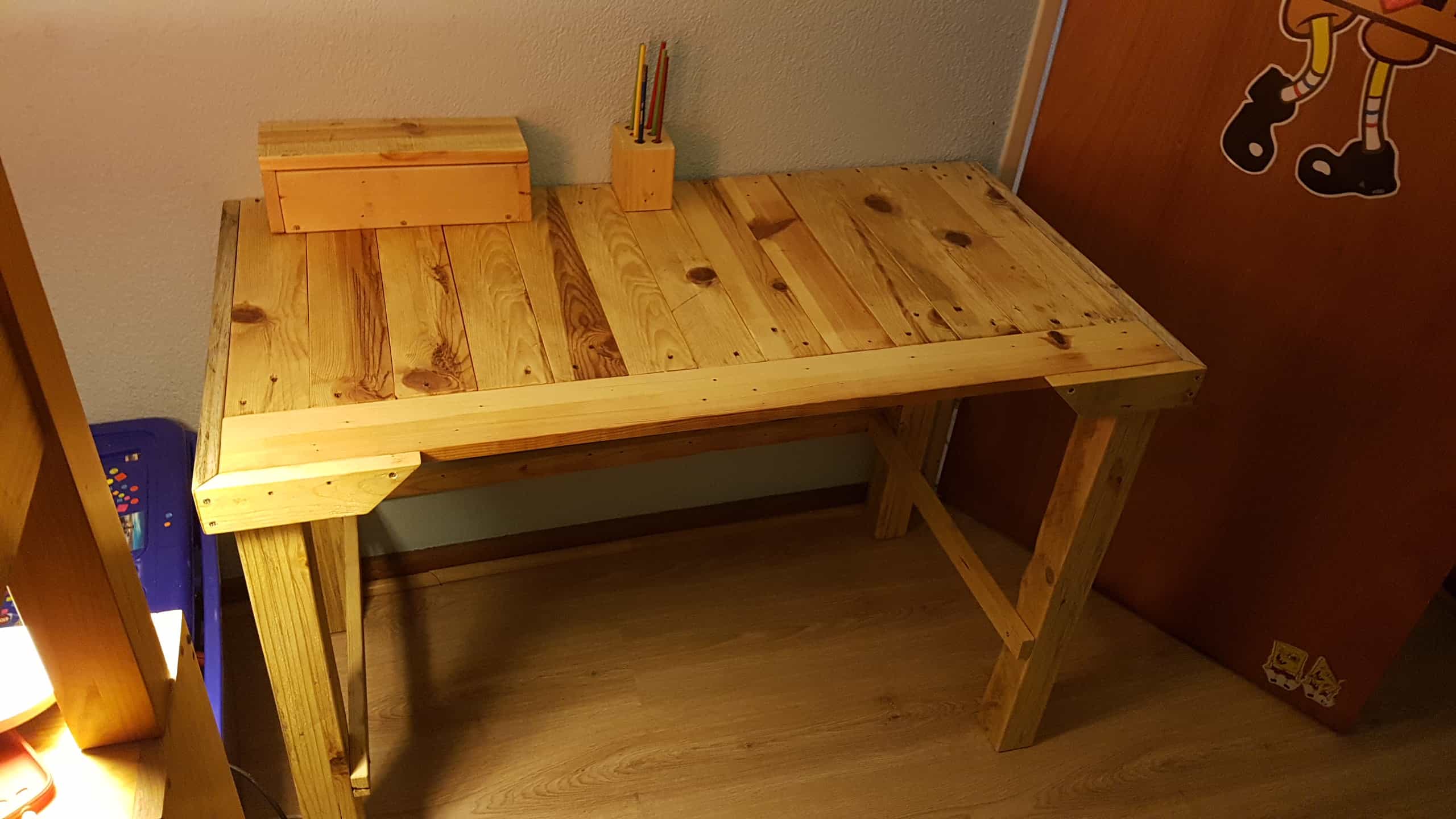
Section 7: Integrating Sustainability Beyond the Pallet
While the pallet desk itself embodies sustainability, consider extending this philosophy to your entire workspace. Opt for energy-efficient lighting, use recycled paper products, and decorate with potted plants to improve air quality. Embrace a minimalist approach to reduce clutter and promote a calm, productive environment.
Section 8: The Impact Beyond Your Workspace
The ripple effects of your sustainable pallet desk creation extend beyond your personal space. By sharing your project on social media, blogs, or within your community, you inspire others to adopt similar eco-friendly practices. This fosters a culture of upcycling, encouraging individuals to see the potential in everyday items that would otherwise be discarded. As more people embrace sustainable DIY projects, the demand for new, resource-intensive furniture decreases, contributing to a collective effort in reducing waste and preserving natural resources.
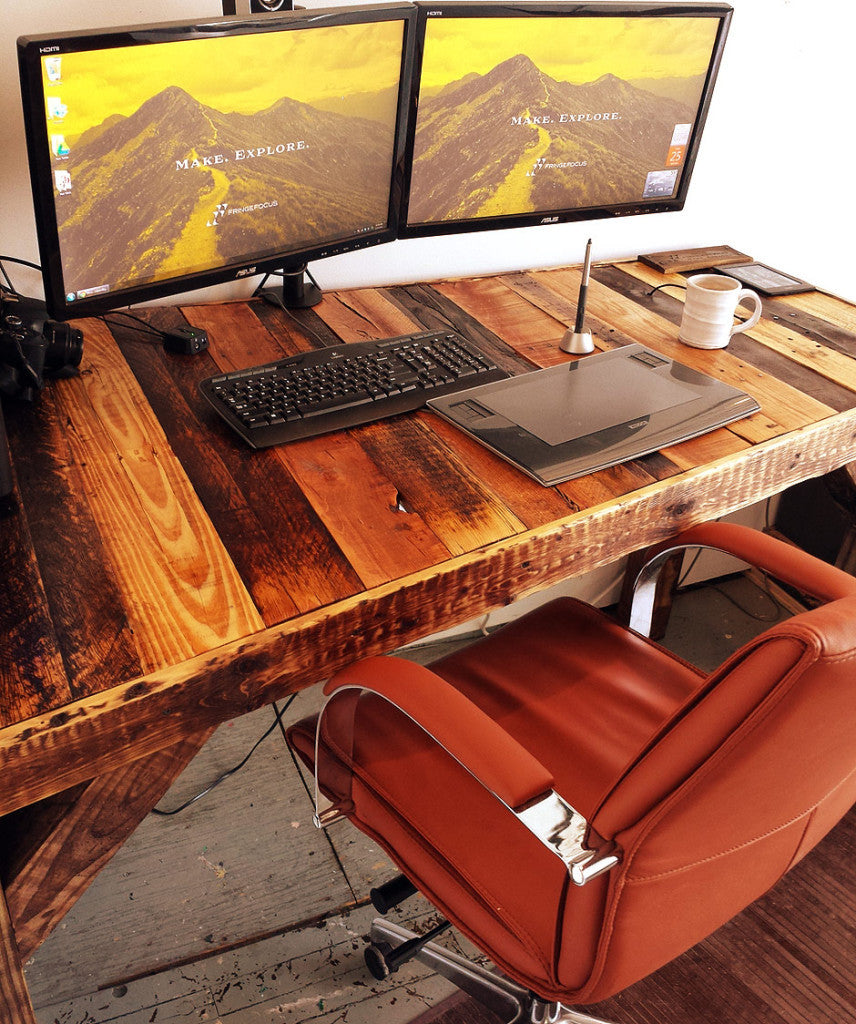
Section 9: Adaptability and Future-Proofing
One of the unsung advantages of a pallet desk is its adaptability. As your work needs evolve or your space requirements change, the modular nature of pallet furniture allows for easy modification or disassembly. Components can be reused for different projects or repurposed again, ensuring that even if your desk’s function changes, its materials remain in use. This forward-thinking approach to furniture design aligns with the principles of a circular economy, where items are designed with their entire lifecycle in mind.
Section 10: Cultivating Mindfulness and Gratitude
The hands-on process of building your own sustainable workspace fosters a deep sense of mindfulness and gratitude. Each sanding stroke, screw turned, and coat of finish apply is a reminder of the resources save and the positive impact on the environment. This mindfulness extends to your daily work routine, where the desk serves as a grounding element, encouraging reflection on consumption patterns and inspiring a more conscious approach to daily choices. It’s a subtle yet constant reminder of our interconnectedness with the planet and the responsibility we hold to care for it.
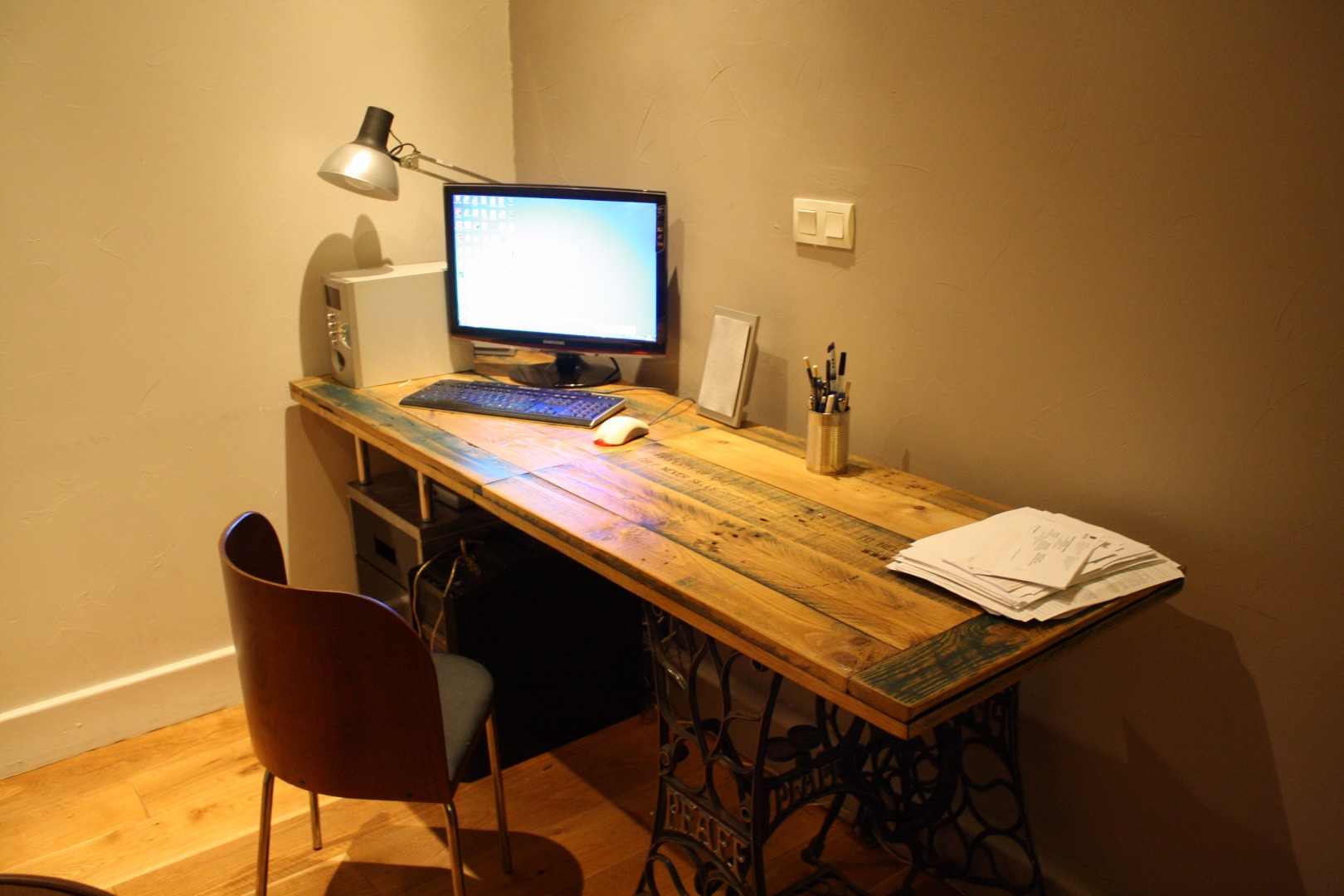
Section 11: Joining a Broader Movement
By choosing to create a sustainable pallet desk, you are effectively joining a global movement of individuals and communities dedicated to reducing waste and promoting sustainability. From attending workshops on upcycling to participating in local zero-waste initiatives, there are countless opportunities to deepen your involvement and learn from others. Collaborate, share ideas, and celebrate successes together, knowing that each small act contributes to a larger narrative of positive change.
Conclusion: Crafting a Sustainable Legacy
In conclusion, the pallet desk DIY project not only yields a unique and functional piece of furniture for your home office but also serves as a tangible testament to your commitment to sustainability. It’s a reminder that amidst the hustle and bustle of daily work, we can still make choices that respect and preserve our planet. By turning discarded materials into something both beautiful and useful, we demonstrate that creativity and environmental consciousness go hand in hand, inspiring others to follow suit in their own pursuits of sustainable living.
